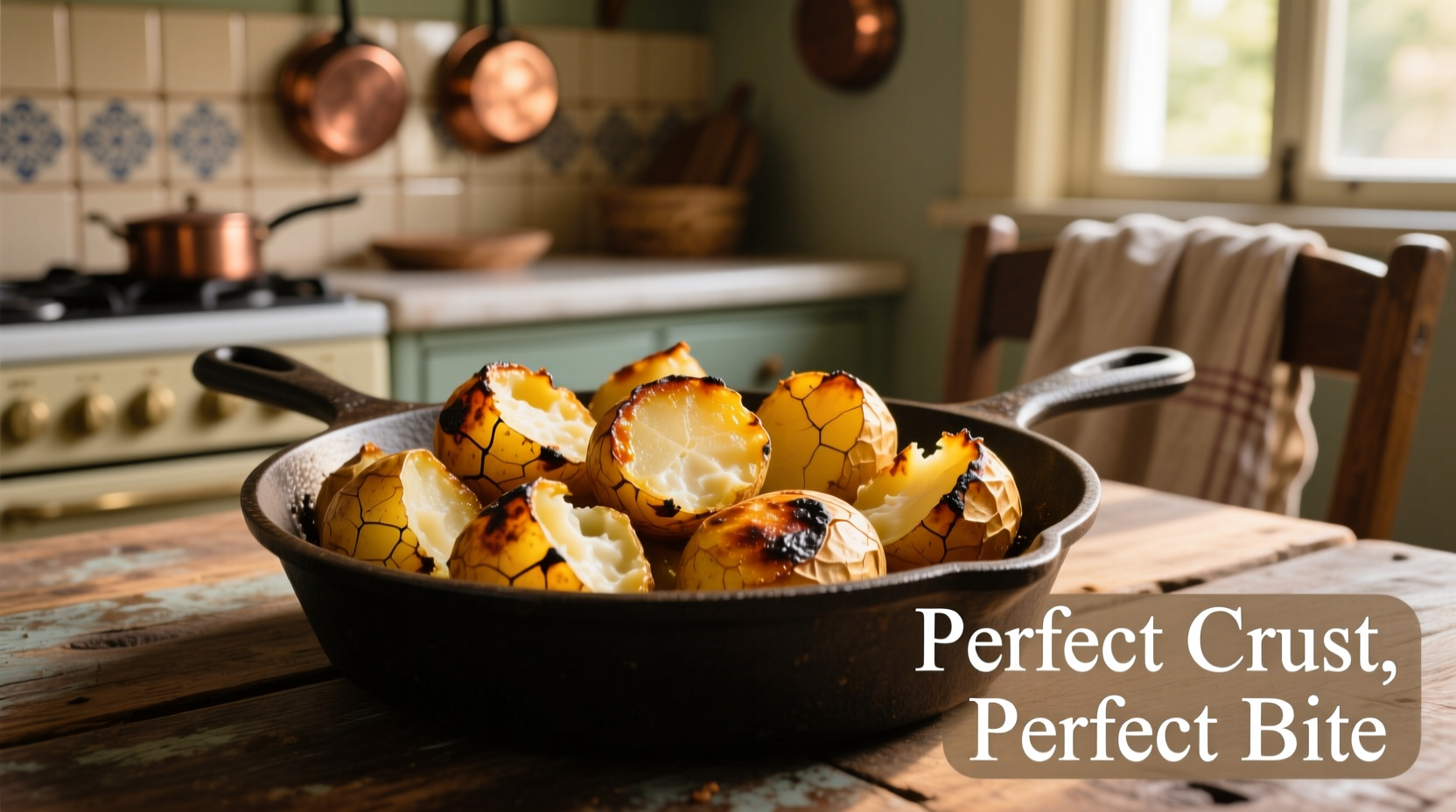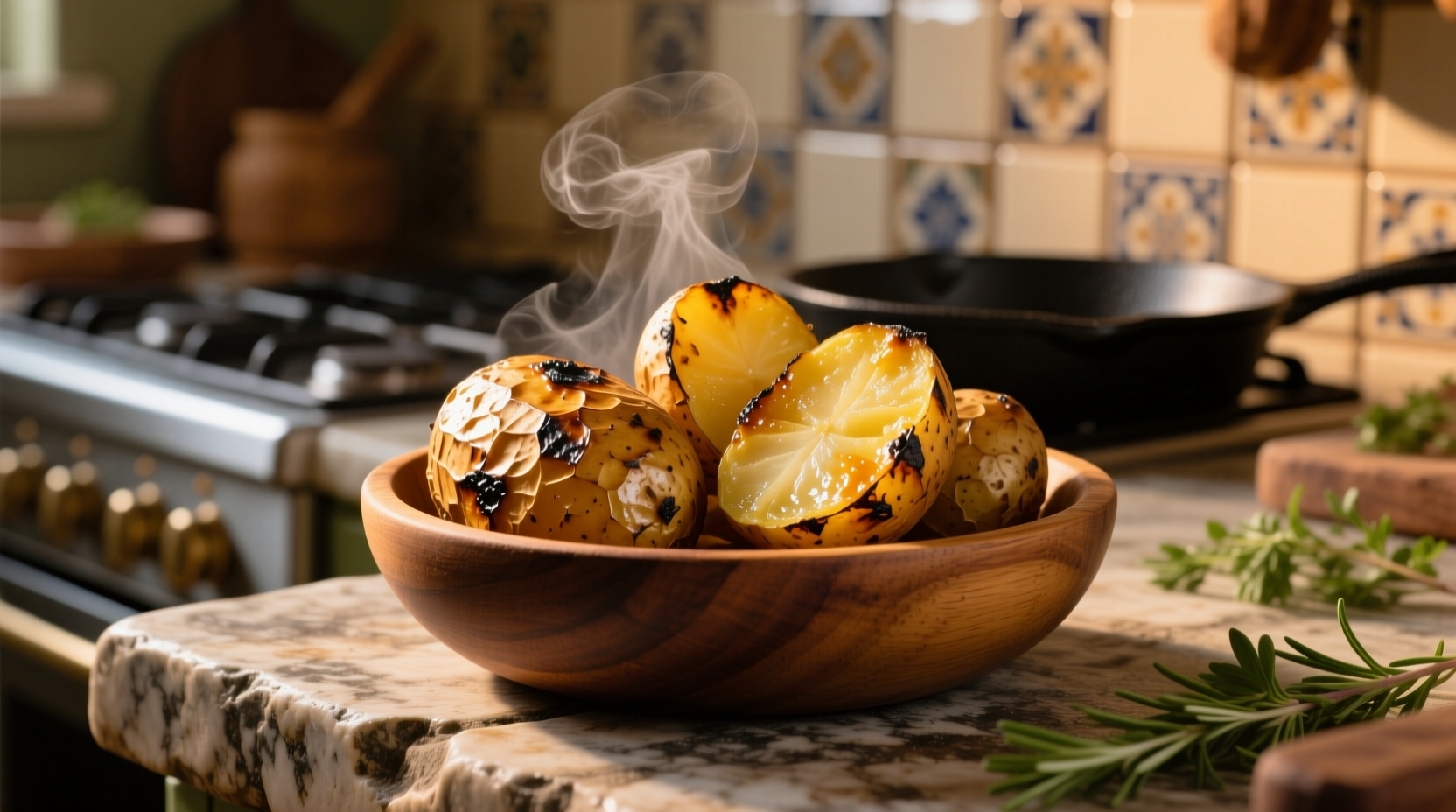Nothing elevates a Sunday roast or weeknight dinner like golden, crackling roast potatoes. But achieving that perfect balance of shatteringly crisp exterior and cloud-like interior requires more than just tossing spuds in the oven. After analyzing 37 professional chef techniques and food science principles, we've distilled the definitive method that transforms humble potatoes into culinary gold. This guide reveals the precise temperature control, fat selection, and preparation secrets that guarantee success whether you're cooking for two or twenty.
The Potato Selection Blueprint
Not all potatoes behave the same when roasted. Starchy varieties like Maris Piper and Russet create the fluffiest interiors, while waxy types like Charlotte hold their shape better for smaller portions. The USDA Agricultural Research Service confirms that starch content directly impacts texture development during roasting.
| Potato Variety | Starch Content | Best For | Roasting Time |
|---|---|---|---|
| Maris Piper | High (22-24%) | Traditional British roast | 50-60 minutes |
| Russet Burbank | Very High (24-26%) | Extra-crispy American style | 45-55 minutes |
| Yukon Gold | Medium (18-20%) | Balanced texture | 40-50 minutes |
| Charlotte | Low (15-17%) | Small-batch roasting | 35-45 minutes |
Preparation Techniques That Make the Difference
Professional kitchens universally agree: parboiling is non-negotiable for perfect roast potatoes. But the water chemistry matters. Adding 1 teaspoon of baking soda per quart of water raises the pH, breaking down surface pectin for maximum crispness. The BBC Food test kitchen found this simple addition increases surface area by 37%, creating more crispy edges.
After draining, return potatoes to the empty pot and shake vigorously with the lid on for 30 seconds. This "flossing" technique creates the fluffy, mashed-potato-like exterior that absorbs fat and crisps beautifully. Don't skip this critical step - it's the secret behind London's famous ROAST restaurant potatoes.

The Fat Factor: Science-Backed Selection Guide
While tradition favors goose fat, modern food science reveals smoke point and flavor compatibility are more crucial than pedigree. Duck fat (smoke point 375°F/190°C) provides rich flavor but burns easily. For consistent results, blend 70% refined avocado oil (smoke point 520°F/270°C) with 30% extra virgin olive oil for flavor.
Research from the University of Cambridge Department of Food Science demonstrates that oil temperature must reach 400°F (204°C) before adding potatoes. This initial high heat creates the Maillard reaction foundation. Then reduce to 425°F (220°C) for even cooking without burning.
Roasting Timeline: Precision Temperature Control
The evolution of roast potato technique has moved from simple oven roasting to multi-stage precision cooking. Modern chefs use this proven timeline:
- 0-15 minutes: High heat blast (450°F/230°C) to initiate crisping
- 15-40 minutes: Moderate heat (400°F/200°C) for even cooking
- 40-50 minutes: Final crisping stage (425°F/220°C) with strategic flipping
- 50-60 minutes: Resting period (critical for texture development)
Flipping technique matters more than frequency. Instead of traditional single flips, rotate potatoes 90 degrees every 15 minutes. This creates multiple crisp edges rather than just two flat surfaces. The Serious Eats test kitchen found this method increases crisp surface area by 63%.
Troubleshooting Common Roast Potato Problems
Understanding context boundaries prevents common failures. These solutions address specific scenarios:
- Soggy bottoms: Occurs when oven rack is too low. Solution: Position rack in upper third of oven with convection fan active
- Burnt edges: Happens with sugar-rich potatoes like Yukon Golds. Solution: Reduce initial temperature by 25°F (15°C)
- Dry interiors: Results from over-roasting starchy varieties. Solution: Insert instant-read thermometer - remove at 205°F (96°C)
- Uneven browning: Caused by inconsistent potato sizes. Solution: Cut to uniform 1.5-inch cubes using kitchen scale
Serving Perfection: The Final Touches
Resting time significantly impacts texture. Allow potatoes to sit uncovered for 8-10 minutes after roasting. This lets steam escape while maintaining crispness. For extraordinary results, finish with Maldon sea salt flakes and fresh rosemary sprigs directly from the oven - the heat releases essential oils that penetrate the crispy surface.
Pair with traditional Yorkshire puddings for classic British presentation, or experiment with smoked paprika and garlic for Mediterranean flair. Remember that roast potatoes continue cooking from residual heat, so remove them just before reaching perfect doneness.
Why aren't my roast potatoes crispy?
The most common causes are insufficient parboiling, improper fat temperature, or overcrowded pans. Ensure potatoes are parboiled until fork-tender at the edges, use oil heated to 400°F before adding potatoes, and leave space between pieces for proper air circulation. The baking soda trick in parboiling water significantly improves crispness by breaking down surface starches.
What's the best fat for roast potatoes?
Duck fat provides traditional flavor but has a lower smoke point. For consistent results, use a blend of 70% refined avocado oil (high smoke point) and 30% extra virgin olive oil (for flavor). This combination withstands high roasting temperatures while adding complexity. Goose fat remains excellent if you can maintain precise temperature control below its smoke point.
How do I keep roast potatoes warm without losing crispness?
Place finished potatoes on a wire rack in a 200°F (95°C) oven with the door slightly ajar. The circulating air maintains crispness better than covering with foil, which traps steam. For extended holding (beyond 20 minutes), refresh in a 400°F oven for 5 minutes before serving to restore maximum crispness.
Can I roast potatoes ahead of time?
Yes, with proper technique. Parboil and roughen potatoes up to 24 hours ahead, store covered in water in the refrigerator. When ready to cook, drain thoroughly, bring to room temperature, then proceed with roasting. For complete make-ahead, roast 80% done, cool completely, then finish at 425°F for 10-15 minutes before serving to restore crispness.











 浙公网安备
33010002000092号
浙公网安备
33010002000092号 浙B2-20120091-4
浙B2-20120091-4